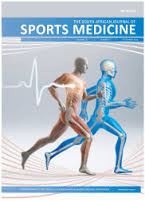‘I’m doing it for myself’: Using a smartphone-based exercise service during the COVID-19 lockdown in the Faculty of Health Sciences, University of the Witwatersrand, South Africa
DOI:
https://doi.org/10.17159/2078-516X/2021/v33i1a9053Abstract
Background: Sufficient physical activity (PA) lowers poor health outcomes, with data showing these protective effects in populations under varying levels of lockdown during the COVID-19 pandemic. The advent of online PA programmes has created novel opportunities to offset the deleterious effects of inactivity. However, data are limited and the readiness and acceptance of such technology is unknown. These authors nevertheless noted an opportunity to investigate this approach based on promising emerging data at the time of the hard lockdown in South Africa.
Objective: This exploratory study investigated the engagement and perceptions of a smartphone application to promote health and fitness in a sample of employees at a South African university.
Methods: Employed members of staff (n=15) of the University of the Witwatersrand were recruited through email invitation during the hard Level 5 COVID-19 lockdown in 2020. Individualised home-based PA programmes were prescribed through a mobile application for a period of eight weeks. Researchers qualified in Biokinetics provided online supervision of the exercise sessions during the intervention. Participants were asked to complete a self-reported questionnaire about their use of the application. Thematic analysis was used to understand these responses.
Results: Lack of motivation was perceived to have a negative effect on participation in the online PA programme. Only one participant reported using the mobile application consistently during the study period, while half of the participants reported having trouble with the usage of the application. The participants frequently mentioned the need for technical support and further engagement from the clinicians supervising the PA programme to ensure use and progression. Staff identified issues with connectivity and already having too many phone applications (apps) amongst the reasons for the technical difficulties.
Conclusion: This study demonstrates the challenges and potential for the uptake of online PA interventions during COVID-19 and, despite its small sample size, the data provide important lessons learned that will be used as information in further investigations.
Downloads
Downloads
Published
Issue
Section
License
The South African Journal of Sports Medicine reserves copyright of the material published. The work is licensed under a Creative Commons Attribution 4.0 (CC BY 4.0) International License. Material submitted for publication in the South African Journal of Sports Medicine is accepted provided it has not been published elsewhere. The South African Journal of Sports Medicine does not hold itself responsible for statements made by the authors.
How to Cite
- Abstract 491
- PDF 427






.png)